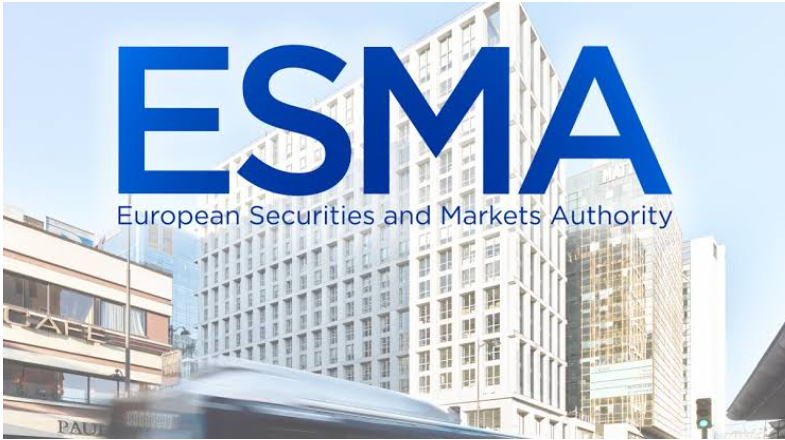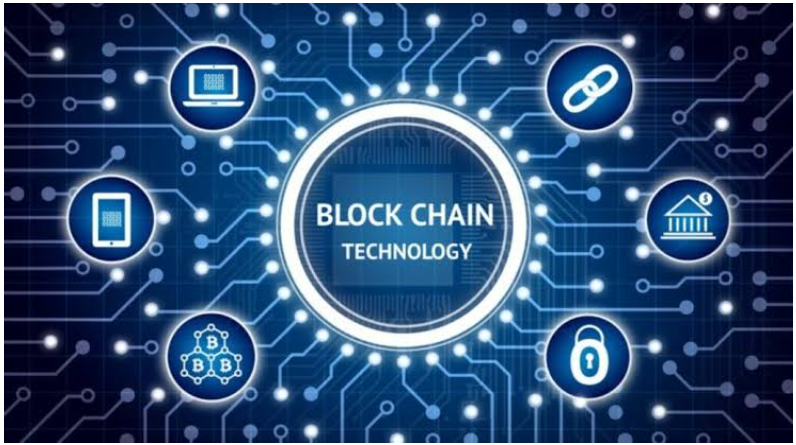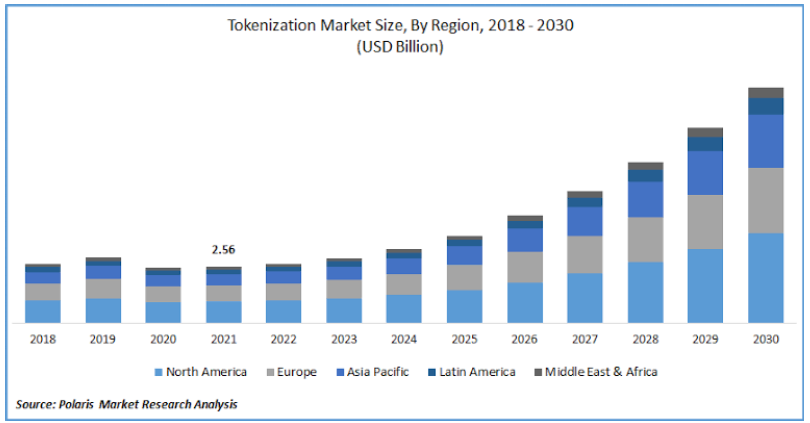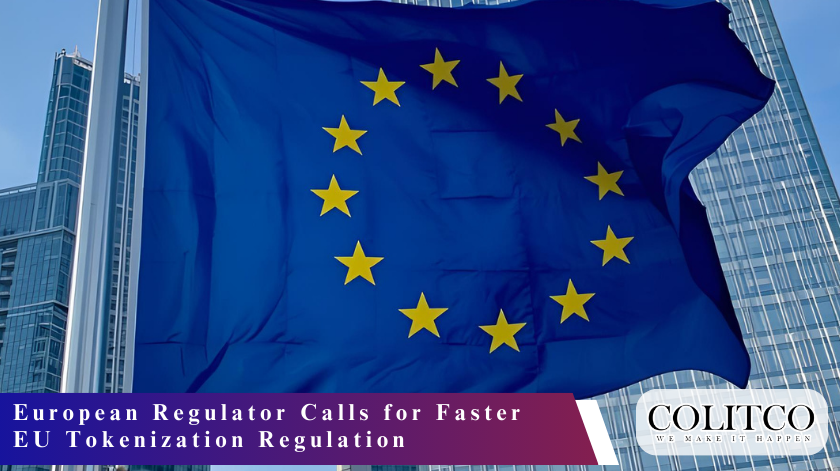The European Securities and Markets Authority (ESMA) has warned that the European Union (EU) might lag behind the rest of the world when it comes to tokenization. Implementing clear regulations should be the focus of the EU, as stated by executive director Natasha Cazenave.
While the digital asset markets in the United States, the United Kingdom, and Asia are flourishing, Cazenave claims that “Regulatory inaction could undermine the competitiveness of European capital markets.” As Cazenave pointed out, tokenization remains a significant catalyst for innovation and financial modernization, which ESMA echoed.
ESMA warns EU risks falling behind globally in tokenization
What Is Tokenization and Why Does It Matter?
Tokenization refers to the conversion of an asset into a blockchain-based token. It can be done for real estate, stocks, commodities, and even artworks.
The tokens can be traded digitally, enhancing liquidity, transparency, and accessibility on a global scale. Digitising assets enables investors to buy fractions of costly assets, thereby lowering the investment threshold.
Tokenization also supports automated smart contracts, which reduce operational expenses. It is expected by some experts that the impact of tokenization on traditional capital markets will be felt within five years.
Why the EU Tokenization Regulation Cannot Lag Behind
The United States and Singapore already allow digitalised securities and bonds. Alongside that, the UK is investigating the use of blockchain for its government bonds and clearing. Europe is in danger of losing market share due to the absence of clear tokenisation regulations.
Cazenave also emphasised the risk that fintech companies and investors would shift to other regions in the absence of prompt actions. Appropriate regulations must be enforced to simultaneously shield the investor and promote innovation. 
The UK explores blockchain applications for government bonds and clearing
How Can the EU Accelerate Tokenization Regulation?
To better regulate tokenization, the EU may consider the following actions:
- Define Legal Position: Issue clear guidelines on tokenized asset possession and the rights of investors.
- Drive Innovation: Encourage blockchain studies, experimental projects, and fintech innovation.
- Push for Global Consensus: Coordinate with international authorities for unified tokenization policies.
- Inform All Parties: Conduct sessions and provide materials for banks, investors, and fintech companies.
- Reduce Licensing Complexity: Develop easier processes for companies dealing with tokenized securities.
- Watch Out for Threats: Implement well-defined rules on operational, cybersecurity, and abuse of market manipulation threats.
Taking these actions could quicken their use, boost investor trust, and maintain Europe’s lead in the market.
What Are the Global Tokenization Trends?
Tokenisation is evolving quickly in different parts of the world. The US has introduced ETFs, securities, and real estate tokenisation platforms. The UK is investigating the use of blockchain for government bond issuances and trade settlement.
Singapore and Switzerland are conducting pilot programs for the digital asset marketplaces that serve both retail and institutional investors. Tokenised debt and equity are being adopted in emerging Asian markets to increase investments.
All these developments exemplify the necessity of appropriate regulations coupled with state-of-the-art infrastructure in order to draw capital from across the globe. According to some analysts, the valuation of tokenised assets worldwide could run into the hundreds of billions of dollars by 2030.
European Regulator: EU Must Act Now
Cazenave said the EU cannot afford to delay any longer. Tokenization has moved beyond a niche concept to a core feature in today’s financial markets.
“Capital markets in Europe need to grow and change if they want to keep up with the rest of the world,” she said.
Having clear regulations in place is time sensitive; missing the window of opportunity will hurt the market’s liquidity and minimise investment opportunities. The European regulator has called on policymakers to complete MiCA rules and issue guidance on tokenized asset legislation.
EU authorities need to provide the financial sector and retail investors with a nurturing environment that is safe and innovative. Fintech companies and investors are eager to find out whether Europe will be able to deliver innovation and speed on par with the rest of the world.
Conclusion
The advantages of tokenization are numerous, including better liquidity, transparency, and financial inclusion, to name a few. The EU runs the risk of losing ground internationally if it does not implement timely and unambiguous regulations.
European markets can balance investor protection and innovation if strong frameworks are put in place. Europe’s tokenization accelerates on a global scale; the wait is not an option, as clearly pointed out by Cazenave.
With the right regulations adopted without procrastination, Europe can stand out and be a destination of choice for investment in this digital era.
FAQs
- What does tokenization mean?
Tokenization refers to the process of turning physical or real-world assets into tradable securities on blockchain platforms.
- What are the implications of EU tokenization regulations?
They relate to ensuring investor safety, offering legal certainty, and ensuring the competitiveness of European capital markets.
- What are the means through which the EU can promote tokenization?
The EU can promote tokenization through innovation, global collaboration, and educating the market players, along with clearing the regulations.
- Which nations are in front in terms of tokenization?
Singapore, the United States, the United Kingdom, and Switzerland are making great strides in tokenized securities and digital bonds.
- ESMA’s relation to tokenization?
ESMA, for the securities markets of the EU, provides guidance, oversees, and tracks the tokenization-related risks.
- What makes tokenization attractive to investors?
It enables ownership in parts, lowers necessary investments, and improves liquidity as well as market reach.












